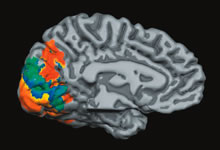New Drug Targets for Brain Cancer

Johns Hopkins Comprehensive Brain Tumor Center is currently looking to find and use drug targets for the most common malignant brain tumor in children (medulloblastomas) and adults (glioblastomas). In order to accomplish this goal, we have three active projects:
- Mutation and amplification detection in tumors
- Large-scale expression analysis of brain cancers and brain cancer models
- Drug development
Mutation Detection
Our team currently uses two main approaches to fine genomic alterations in these tumors. Once a mutation is found, we test it thoroughly to make sure that it indeed contributes to tumor formation or progression:
High-throughput sequencing of gene: this allows us to look for new mutations. It can take thousands or tens of thousands of reactions to find one mutation. These are typically mutations that are found in the tumor sample, but not in the patient’s DNA from normal tissue. Johns Hopkins has recently further defined the extent to which these mutations occur in glioblastomas.
Digital Karyotyping: this method was invented at Johns Hopkins. It allows us to look for larger chromosomal changes that occur in cancer. Our team recently used this method to find a gene that is genomically amplified in medulloblastomas. We are analyzing this gene (OTX2) to determine if it is a useful drug target.
Gene Expression Analysis
Our team studies the complex pattern of expression changes that occur during tumor formation at the messenger RNA level. Using Serial Analysis of Gene Expression (SAGE) technology that was developed at Johns Hopkins, we can look at all the expressed genes in a cell at one time. Our lab has developed experimental models to use in conjunction with SAGE in combination with advanced bioinformatics to find the genes with the critical changes that occur during brain tumor progression. This allows us to survey from all the expressed genes only those that have a statistically significant change during key processes of tumor formation.
Johns Hopkins has also produced and expanded a public resource for the National Cancer Institute that helps all researchers find expression based targets for their cancer interests. We have built the largest cancer gene expression database in the world in collaboration with the Cancer Genome Anatomy Project (CGAP).
Our lab has been able to locate genes that are activated in the following processes of brain tumor formation:
- Protection against Hypoxia: this core of the tumor is most resistant to current therapies. We have determined some of the genes that protect the hypoxic tumor cell and promote angiogenesis
- Tumor Invasion: Invasion of glioblastomas is one of its most malignant features. We have found the genes activated at the mRNA level during cell migration and invasion
- Developmental Signaling: Pediatric brain tumors such as medulloblastomas inappropriately use developmental growth signals. We are investigating these new genes as potential targets.
We believe that targeting a combination of these genes will inactivate key processes and ultimately help prevent tumor growth.
Drug Development
Our lab is looking for small molecule inhibitors for gene targets that are altered during glioblastomas or medulloblastomas. This work is funded by the Ludwig Trust and the Children’s Cancer Foundation. We are screening libraries of both synthetic compounds and natural extracts to see what brain cancer cells with specific mutations react to. Our work with natural extracts is in collaboration with the Natural Products Research Lab at Research Triangle International.
So far, we have identified about four compounds that have activity specific for glioblastoma cells with a specific mutation (EGFRv111).
